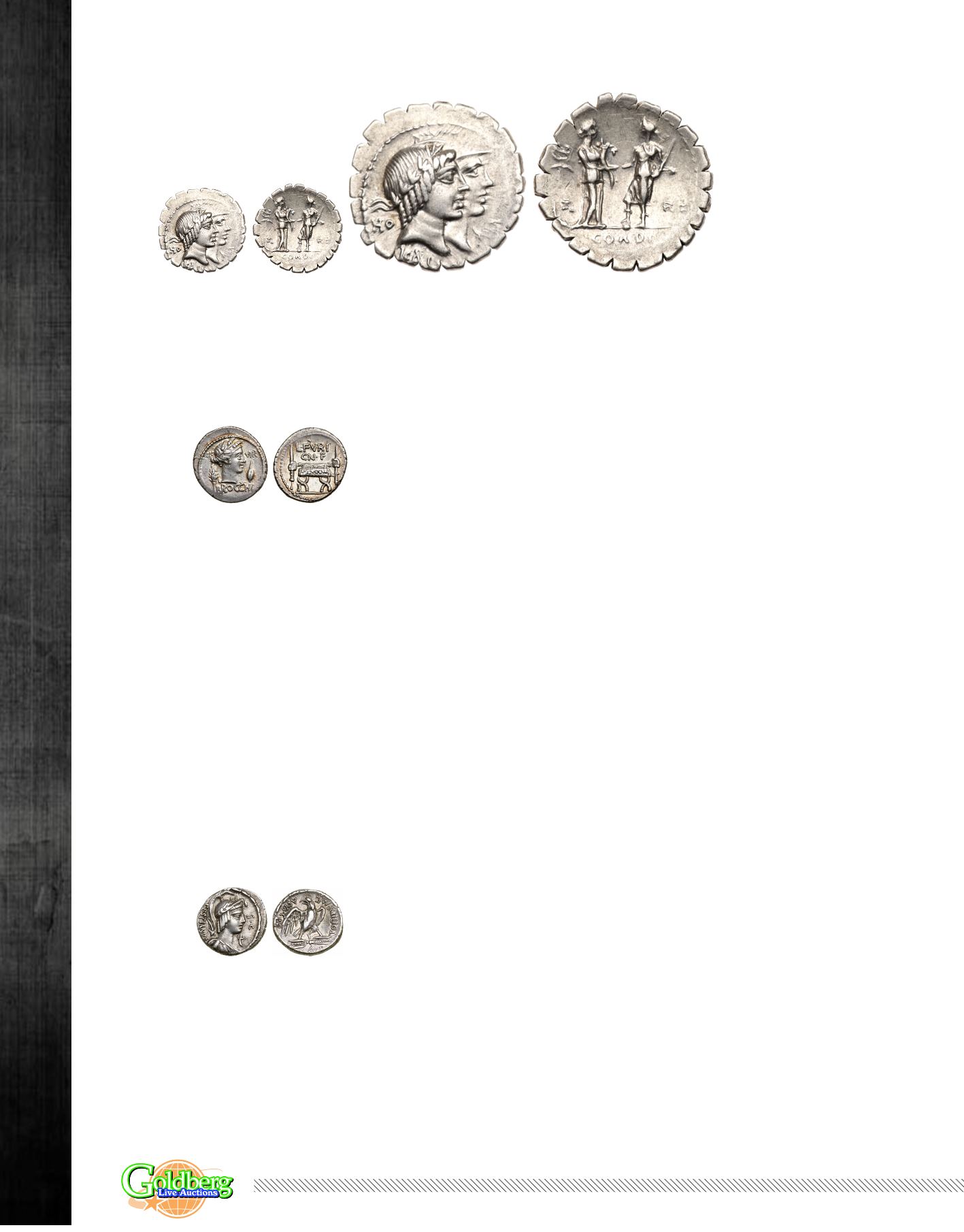

155
|
Session Five - Tuesday, February 14th 10:00am PST
Enlargement
1968 Q. Fufius Calenus and M. Cordus. Silver Denarius (3.80 g), 68 BC
. Rome. HO behind, V[I(RT)] before, KAL[ENI] below, jugate heads of
Honos, laureate, and Virtus, wearing crested helmet, right.
Reverse:
CORDI in exergue (ITAL) to left, RO to right, Italia standing right, holding
cornucopiae, clasping hands with Roma standing left, foot on globe, holding scepter; in left field, winged caduceus. Crawford 403/1; Sydenham
797; Fufia 1.
Extremely Fine
.
Estimate Value .............................................................................................................................................................................$500 - 600
From The Herbert & Aphrodite Rubin Collection; Purchased privately from NFA in the 1980s.
1969
L. Furius Cn.f. Brocchus. Silver Denarius (3.81 g), 64 BC
.
Rome. III VIR across field, BROCCHI below, draped bust of
Ceres right, wreathed with grain ears, between wheat ear and
barley corn.
Reverse:
L FVRI / CN F in two lines above, curule
chair between fasces. Crawford 414/1; Sydenham 902; Furia
23. Delicate golden toning.
Superb Extremely Fine
.
Estimate Value ......................................................$300 - 400
The obverse possibly relates to a family history where an ances-
tor served as aedile of the grain supply, the
cura annonae,
or it
may just reflect the moneyer' s populist political philosophy. At
the time this coin was struck, Catiline' s conspiracy was secretly
developing, only to be exposed and crushed the following year
during Cicero' s consulship. Although grain shortage was not
one of the social causes of the Catiline conspiracy as outlined by
Cicero - remember that Pompey had cleared the Mediterranean
of the pirate menace in the early 60s BC and thus the grain sup-
ply had been secured - after the revelation of the plot, Cato pro-
posed a grain measure extending the dole to include Rome' s
poor. Obviously, then, even though supply was plentiful, it was a
source of discontent for the many urban plebs who were not
benefitting from free distribution, and perhaps it was this mood
that Brocchus was attempting to exploit by his choice of types
on this coin.
1970
M. Plaetorius M.f. Cestianus. Silver Denarius (3.75 g),
57 BC
. Rome. CESTIANVS behind, S C before, winged bust of
Vacuna right, wearing crested helmet, bow and quiver at shoul-
der; below chin, cornucopiae.
Reverse:
[M PL]AE-TORIVS M F
AED CVR, eagle standing right on thunderbolt, head left. Craw-
ford 409/1; Sydenham 809; Plaetoria 4. Lightly toned.
Choice
Very Fine
.
Estimate Value ......................................................$250 - 300



















